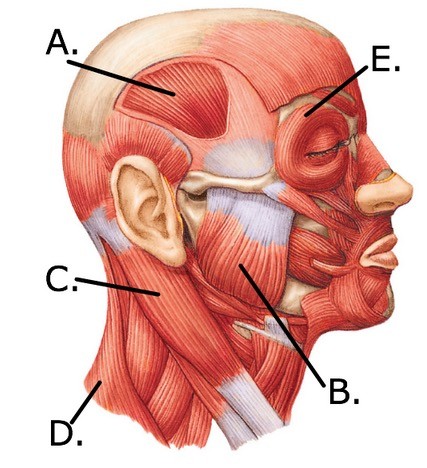Immature, undifferentiated cells that can divide to replace lost or damaged cells are called
a) stem cells.
b) parenchymal cells.
c) fibrotic cells.
d) granulocytes.
e) agranulocytes.
Answer: a
Anatomy & Physiology
You might also like to view...
Input from stretch receptors in the bladder wall ascend the spinal cord to which center in the pons?
a) emetic b) micturition c) renal d) urinary
Anatomy & Physiology
The integumentary system includes the ________.
A. skin, glands, and hair B. skin and muscles C. skin, glands, hair, and nails D. skin
Anatomy & Physiology
 The figure illustrates a lateral view muscles of the head and neck. Which muscle is indicated by "B"?
The figure illustrates a lateral view muscles of the head and neck. Which muscle is indicated by "B"?
A. Masseter B. Orbicularis oculi C. Sternocleidomastoid D. Temporalis E. Trapezius
Anatomy & Physiology
Removal of the ________ would be more harmful to a one-year-old child than an adult
A) thymus B) spleen C) lymph node D) appendix E) palatine tonsil
Anatomy & Physiology